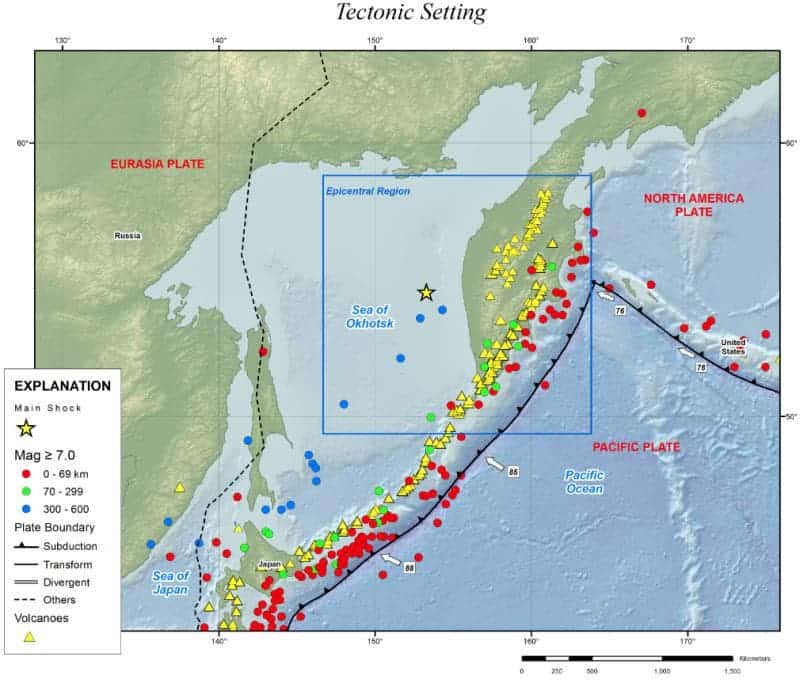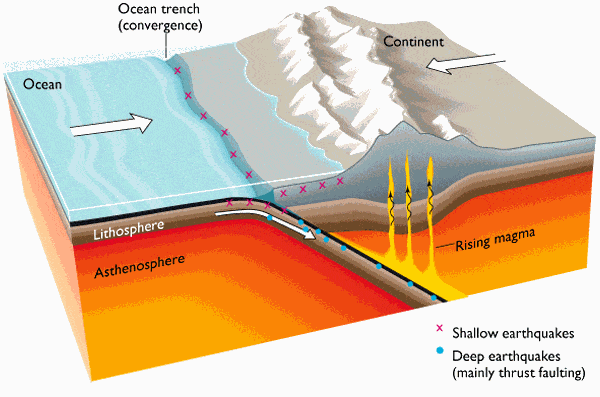A magnitude 8.3 earthquake that struck deep beneath the Sea of Okhotsk on May 24, 2013 still poses a lot of questions to geophysicists. At a depth of about 609 kilometers (378 miles), the kind of rupture which generates an earthquake of this magnitude should just not happen.
The vast majority of significant earthquakes takes place on shallow depths, usually when at the boundary of two or more tectonic plates – those of course, are the most unstable area. If you correlate a map of tectonic plates with a map of the recent earthquakes at any given time, you’ll find that the vast majority are clustered around those areas. Earthquake also occur at major faults, which are also relatively shallow (in the crust).
Intermediary earthquakes have the focus between 70 (or 40, depending on who you listen to) and 300 km; and deep earthquakes take place at over 300 km depth. Of course, there can be no tectonic boundaries and faults at that depth – we’re talking mantle here.
The cause of deep focus earthquakes is still not entirely understood since subducted lithosphere at that pressure and temperature regime should not exhibit brittle behavior. Probably the most discussed possibility is a mineral transition, like for example olivine undergoing a phase transition into a spinel structure. Still, they may still be influenced by crustal tectonics, and most specifically by what is called the Wadati–Benioff zone.
But at these depths, with huge temperatures and pressures, you wouldn’t typically expect such big earthquakes.
“It’s a mystery how these earthquakes happen. How can rock slide against rock so fast while squeezed by the pressure from 610 kilometers of overlying rock?” said Thorne Lay, professor of Earth and planetary sciences at the University of California, Santa Cruz.
Deep earthquakes occur in the transition zone between the upper mantle and lower mantle and are not usually dangerous for humans, but yield very valuable scientific information. As for the Sea of Ohotsk earthquake, it has some very strange characteristics.
“It looks very similar to a shallow event, whereas the Bolivia earthquake ruptured very slowly and appears to have involved a different type of faulting, with deformation rather than rapid breaking and slippage of the rock,” Lay said.
The precise mechanism for initiating shear fracture under the huge pressure at that depth remains unclear, and unlikely to be solved in the nearby future.
“If the fault slips just a little, the friction could melt the rock and that could provide the fluid, so you would get a runaway thermal effect. But you still have to get it to start sliding,” Lay said. “Some transformation of mineral forms might give the initial kick, but we can’t directly detect that. We can only say that it looks a lot like a shallow event.”
Journal Reference:
L. Ye, T. Lay, H. Kanamori, K. D. Koper. Energy Release of the 2013 Mw 8.3 Sea of Okhotsk Earthquake and Deep Slab Stress Heterogeneity. Science, 2013; 341 (6152): 1380 DOI: 10.1126/science.1242032
Was this helpful?





